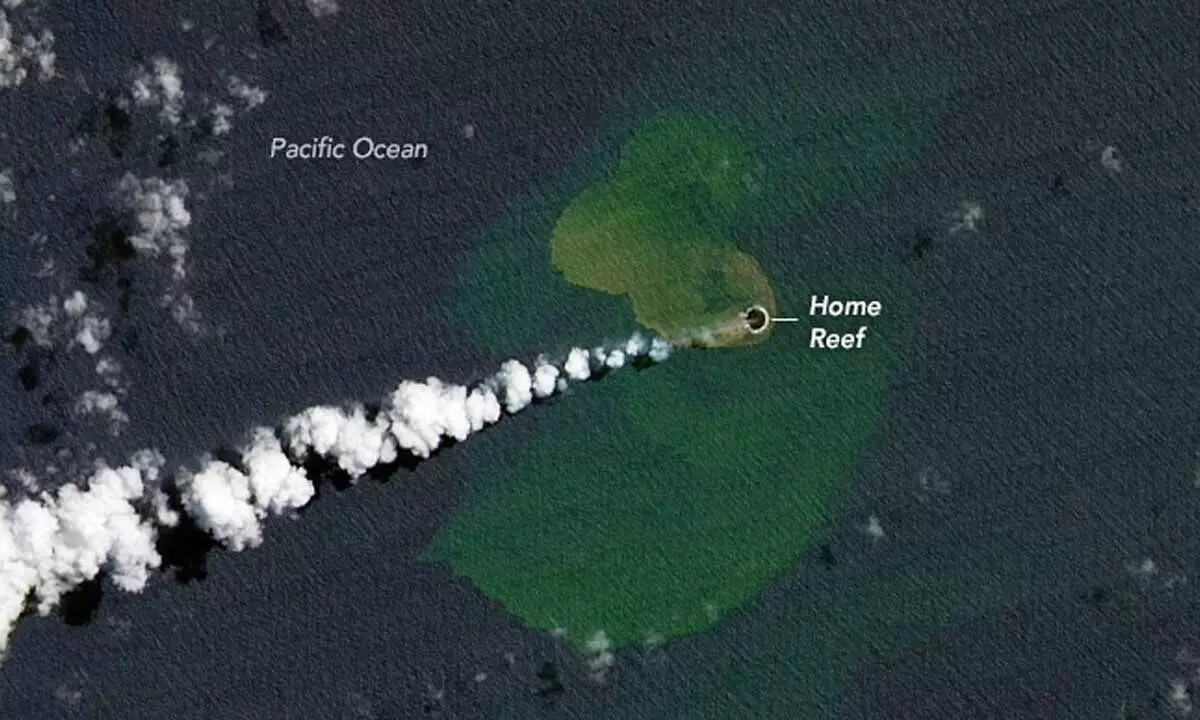NASA Discovers New Island In Pacific Ocean

NASA Discovers New Island In Pacific Ocean
- Following the eruption of an underwater volcano not far from Australia, a new island has been discovered in the southwest Pacific Ocean.
- The island was estimated to be 4,000 square metres in size and 10 metres above sea level on September 14 by Tonga Geological Services experts.
Following the eruption of an underwater volcano not far from Australia, a new island has been discovered in the southwest Pacific Ocean. The Central Tonga Islands' Home Reef volcano began spewing lava, steam, and ash earlier this month, discoloring the area's water in the process. The new island then rose above the water's surface only eleven hours after the eruption, according to NASA Earth Observatory, which took pictures of the island with satellites.
According to a news release from NASA, the young island swiftly expanded in size. The island was estimated to be 4,000 square metres in size and 10 metres above sea level on September 14 by Tonga Geological Services experts. On September 20, however, the researchers reported that the island had expanded to occupy 24,000 square meters.
As per the US space agency, the new island is located southwest of Late Island in the Central Tonga Islands on the Home Reef seamount. However, it also mentioned that the infant island might not be permanent.
NASA explained that Islands formed by submerged volcanoes are frequently transient, however can may last for years. The island formed by the adjacent Late'iki Volcano's 12-day eruption in 2020 washed away within two months, although the island formed by the same volcano in 1995 lasted for 25 years.

















